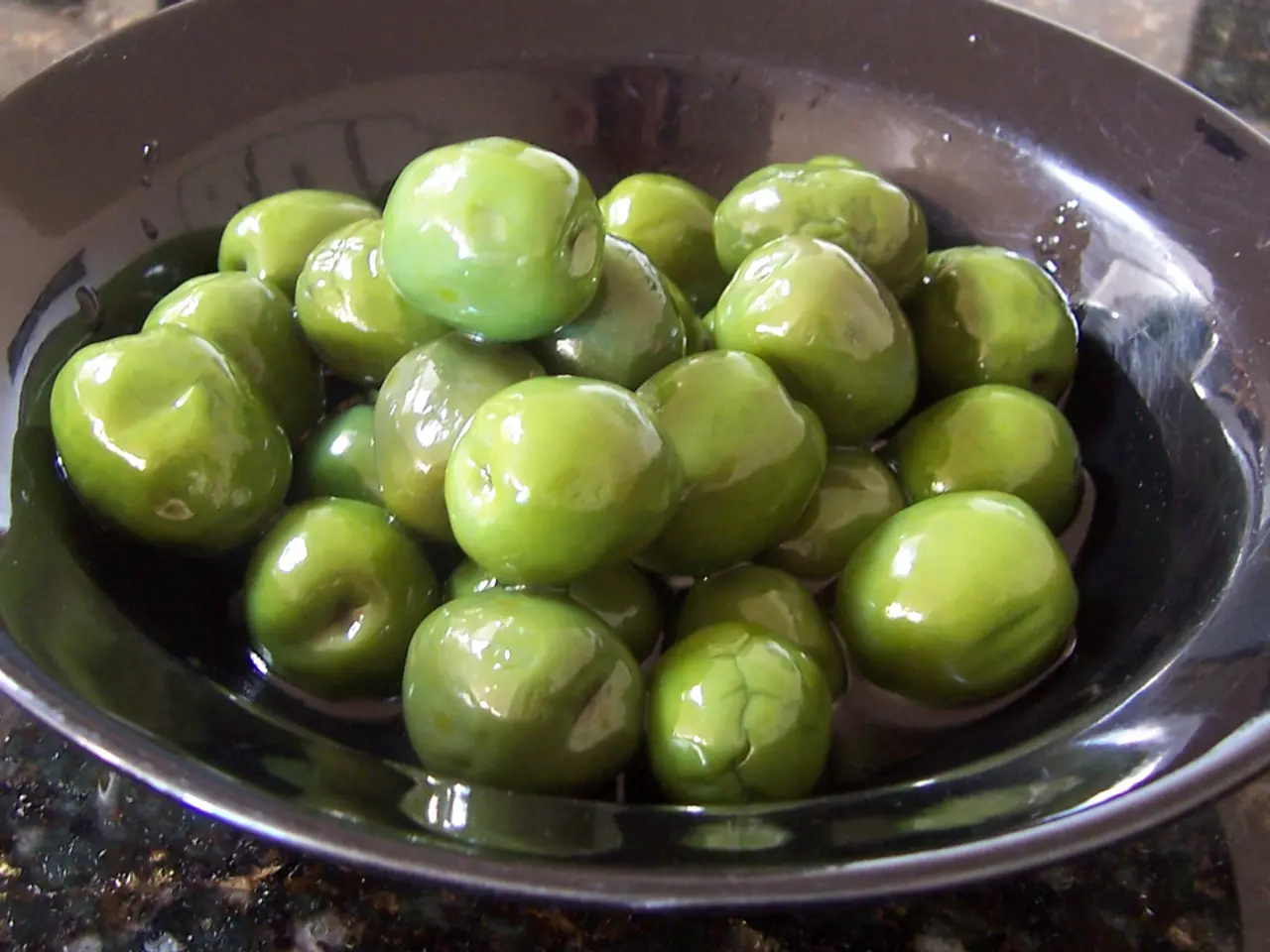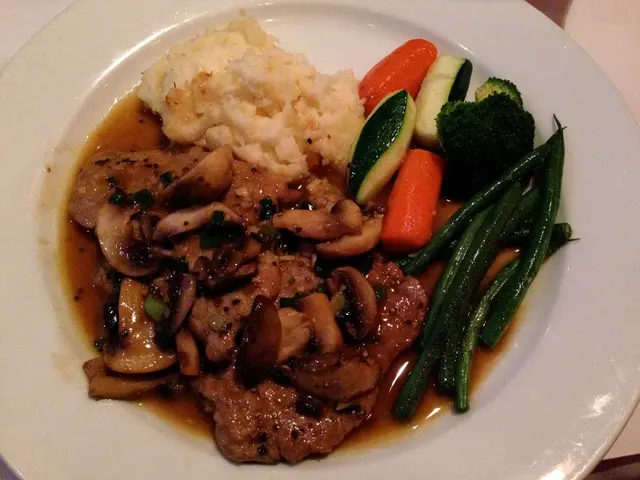Sky-High Olive Oil Prices: A Look at Cost Factors and the Quality of Walnut and Avocado Oils as Alternatives
In the culinary world, extra virgin olive oil has long been a cherished ingredient, a common finishing touch for a variety of dishes such as salads, seafood, and pasta. Known as "liquid gold," this prized oil is not only valued for its versatility but also for its fresh and pungent aroma, reminiscent of summer holidays.
However, the demand for extra virgin olive oil, particularly in speciality stores, has contributed to its increased price. At Italian restaurants, where bread and olive oil are frequently consumed, the high price may lead to a decrease in its consumption due to cost concerns.
The taste of extra virgin olive oil is described as fruity yet bitter, an appeal that can sometimes lead to overconsumption, particularly at Italian restaurants. Despite its allure, the high price may make it less affordable for some consumers. In recent years, the price of extra virgin olive oil has significantly increased, with one litre (35 fl oz) bottles now costing more than HK$120 in many cases.
The significant increase in the price of extra virgin olive oil over recent years is mainly due to a combination of rising global demand, especially for premium and organic varieties, and supply challenges caused by climate change and crop issues in major producing countries like Spain.
Consumer awareness of olive oil’s health benefits, a surge in premium and organic olive oil consumption, and its expanded use in restaurants and gourmet cooking have pushed demand higher. In the US, for example, demand for premium extra virgin olive oils has skyrocketed as consumers seek high-quality, minimally processed products. Spain, the largest producer and consumer, has seen growing domestic consumption as well.
Climate change has severely affected olive harvests, especially in key producing regions such as Spain, through droughts, heatwaves, and diseases that damage olive trees and reduce yields. These adverse growing conditions have diminished supply.
Recent trade tensions and new levies on imports, such as those affecting exports from the EU to markets like Australia, have also contributed to increased prices due to altered trade flows and higher costs at import.
The cost of extra virgin olive oil was relatively low in the 2000s but has since sharply risen, reflecting these combined demand and supply dynamics. The price increase does not include luxury versions with edible gold flakes, further driving up the cost for those seeking a more extravagant experience.
In conclusion, the complex interplay of higher consumer demand for quality and health-oriented products, alongside shrinking supply and trade disruptions, explains why the price of extra virgin olive oil has increased significantly over the years. As consumers continue to seek out this versatile and flavourful oil, it remains to be seen how the market will adapt to these ongoing challenges.
References: 1. Spain's Olive Oil Consumption Skyrockets 2. Premium Extra Virgin Olive Oil Demand Soars in the US 3. Why is Olive Oil Getting More Expensive? 4. Trade Tensions and New Levies Affect Olive Oil Prices
- The popularity of extra virgin olive oil in health-and-wellness circles, fueled by its numerous health benefits, has led to a surge in demand for premium and organic varieties.
- Amidst rising global demand for fitness-and-exercise enthusiasts seeking healthy food options, the demand for food-and-drink items like extra virgin olive oil, considered essential for a Mediterranean diet, has spiked.
- The growing interest in skin-care products with natural ingredients has also boosted the demand for extra virgin olive oil, with consumers incorporating it into their skin-care routine due to its antioxidant properties.
- The popularity of cooking shows and the education on the importance of nutrition have led to an increased interest in healthy-cooking methods and the use of extra virgin olive oil for its undeniable flavor and nutritional value.
- As global cuisines continue to merge and influence culinary trends, the use of extra virgin olive oil has expanded, making it a staple in a wide range of gourmet cooking and lifestyle choices.






